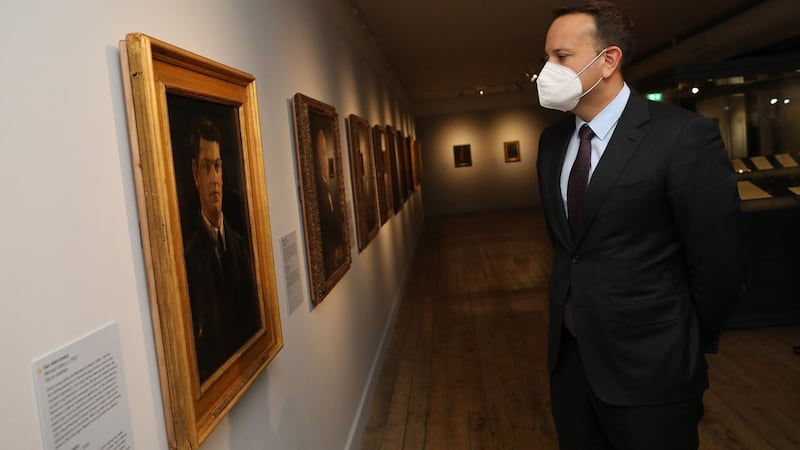On signing the Anglo-Irish Treaty Michael Collins famously opined to Lord Birkenhead, on the British side, that he had signed his own death warrant.
The pen he used to sign that treaty has gone on display along with other items from the National Museum of Ireland collection.
Collins signed the treaty at 2am on the morning of December 6th, 1921 in Downing Street with the Michael Waterman fountain pen he always carried in his top pocket.
The pen is one of the top attractions at the National Museum of Ireland exhibition in Collins Barracks entitled Studio & State: The Laverys and the Anglo-Irish Treaty to mark the centenary of the treaty.
It also includes a signed copy of the treaty, pro- and anti-treaty handbills and a typewriter used by the Irish delegation.
It is a co-curated exhibition between the Hugh Lane Gallery and the National Museum of Ireland.
The exhibition, as the name suggests, features all Sir John Lavery's paintings of the treaty negotiators. The paintings have been loaned by the Hugh Lane Gallery. Not only do they include all the main players, but there is also one of his wife Lady Hazel Lavery, who would later appear on notes issued by the Irish Free State.

The Laverys were an important conduit for the British and Irish sides and had friends in both camps. Lavery’s studio at his home in the unfortunately named 5 Cromwell Place was a place of sanctuary for his sitters. Collins hated sitting still for any length of time and wore his overcoat while being painted with a gun in his pocket.
Lavery was born in Belfast, but grew up in Scotland. He never forgot his Irish roots and gave his treaty portraits to Dublin in 1935 after his wife died.
Tánaiste Leo Varadkar opened the exhibition and, standing behind a portrait of Collins, he echoed Collins's sentiment when he described the treaty as a "stepping stone for freedom and the artefacts of this exhibition show us how the stepping stone was put in place".
The Laverys were a couple who did their best to promote harmony between Britain and Ireland, Mr Varadkar said.
“Their home became an informal safe place where different viewpoints could be exchanged and made opposing positions well understood.
“Lavery had an insight into the private individuals behind the public faces and he approached his work with empathy and understanding. It would have been impossible for anyone else to achieve. Art became politics by other means.”
The exhibition will be available to view until December 2022. Admission is free.








